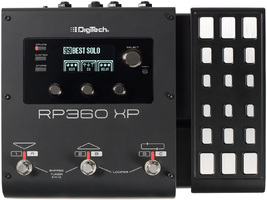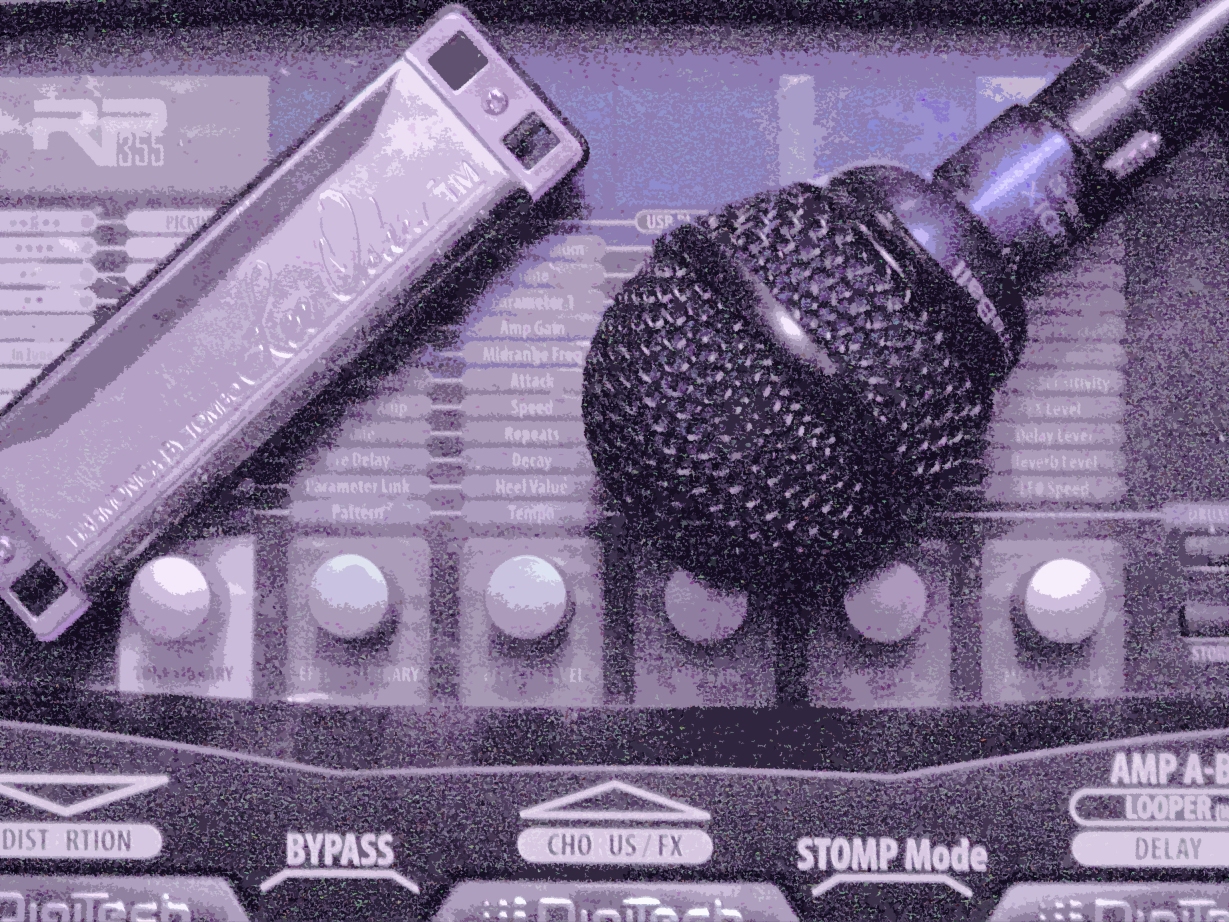
24 hours with the Digitech RP360XP: A+ device, D- Software
I’ve had my Digitech RP360XP, the latest in their RP line, for about a day now, and two things are clear: the box sounds great, and the software for patch configuration and management, to put it bluntly, is plain not good enough.

On the first point, the RP360XP sounds very much like an RP500, in a package just about one-half the size and weight of the 500. I’m also delighted to see that the RP360XP power supply will work with either US (120 volt) or Euro (240 volt) power. This is truly cool stuff for people who gig internationally (as I do a few times every year; I reckon my days of burning out RP255s with London wall power are over, and that’s a good thing).
On the second point, Digitech has inexplicably chosen to make the Nexus software that supports patch editing and management in the RP360XP LESS functional than the barely-good-enough Xedit application that it replaces. Nexus is Not Good Enough. Not nearly. Not if we’re talking about solid support for a working professional who needs to reconfigure the device quickly for specific performance situations.
Xedit had its problems. It was kind of clunky to look at, and you couldn’t even start the application unless an RP was plugged into the computer via USB. But Xedit did allow for quick reconfiguration of the order of patches in the device via drag-and-drop. If you wanted to move a patch from one place to another, all you had to do was left-click on the one you wanted to move, drag it to the desired location, and release the mouse button; Xedit would then drop the selected patch into its new slot and helpfully move everything else up or down in the stack as needed to make room for it.
Pretty good stuff, right? Guess what? No more of that, pal. Nexus won’t do drag-and-drop. If you want to move a patch without overwriting some other patch, which you very well might want to do in order to construct a sequence of patches for a song, you have to export EVERY patch that you need in the sequence, then re-import those patches, one by one, into their new locations. If your new sequence of patches starts in user location #1, that means moving 99 patches, one by one. Can you spell “bull—-?”
The absence of drag-and-drop patch movement on an application of this type in 2014 is incomprehensible to the point of ridiculousness. It is even more incomprehensible given that this feature was available on Xedit, which application Digitech has been supporting since the mid-2000s. And of course, the much-vaunted Nexus app is now revealed to be a less-functional version of Zoom’s Edit&Share software–all the pretty pictures, without the one feature that really matters most. (Did I forget to mention that Nexus forces you to move the mouse in order to change numeric values for parameters, meaning that you can’t just click and type a number in? Now that’s a feature designed to reduce productivity to the bare minimum, and it certainly succeeds on that score.)
I sincerely hope that someone at Digitech realizes quickly how much value the absence of drag-and-drop patch movement removes from Nexus and the RP360XP, and fixes it. It wouldn’t hurt if they also made it possible to type numeric parameters into Nexus instead of forcing the user to try to get an accurate value by moving a mouse. And in general, it’s about f—ing time that Digitech figured out that they’re really in the business of wrapping hardware around software, which means the software better be pretty damn good. Which–in case I haven’t said it clearly enough yet–it’s not.
Related Posts
8 Comments
Leave a Reply
You must be logged in to post a comment.
WHAT’S NEW
Categories
- Audio/Video
- Blog
- Blue Future
- Digitech RP Tricks and Tips
- Discography, CDs, Projects, Info, Notes
- Featured Video
- For the Beginner
- Gallery
- Hunter's Effects
- Hunter's Music
- Huntersounds for Fender Mustang
- Meet the Pros
- More Video
- MPH: Maw/Preston/Hunter
- My Three Big Contributions
- Player's Resources
- Pro Tips & Techniques
- Recommended Artists & Recordings
- Recommended Gear
- Recorded Performances
- Reviews, Interviews, Testimonials
- The Lucky One
- Uncategorized
- Upcoming Performances
- Zoom G3 Tips and Tricks


Hello i,m Wim from the Netherlands.I want to buy a Digitech rp360 ,and will put it on my pedalboard.next to my MXR distortion,Wampler overdrive,and a TC Electronic delay.
My amp is a Marshall 1962 Bluesbreaker,without reverb.That,s why i want to sell the RP 360
because i want to use many different reverbs,also can i use the tuner from the RP360.
My question is. does it effect the sound of the marshall?iff he is in standby possision?I believe it does,t have a true bypass.
Greets wim (sorry for my Englisch writing)
Hi Wim, yes this will work. However, you can’t put the RP360 into Bypass mode, because then the reverbs won’t work either. What you need to do is set up a patch with a Direct amp model, which passes the signal through to the outputs without any amp modeling on it. Then you can add reverb, delay, etc. as you like.
When you say “can I use the tuner,” you mean with a microphone? Or a guitar? Either way, the answer is yes.
Hi Richard !!
I´d read your review and i´d ask you some question that (i think) Win was thinking too…
is it true bypass??? can you play it with your amp without a REAL TONE SUCK???
I´m playing with a Line 6 M9 that has the true bypass delay without sucking your amp tone but i´m curious for rp360xp for a little size.
Regards!!!
So far as I know it’s a true bypass. I’ve never experienced a tone suck with the RP, but remember that I use it with harmonica, not guitar. However, several guitarists have used my setup on a number of occasions, and they’ve all been very happy with the sound. So I doubt you’ll have a problem with any of the RPs in that regard.
Keep in mind also that I use the RP with a clean amp, i.e. a keyboard amp or active PA speaker. If you use the amp modeling with a typical guitar amp, as opposed to something designed for clean gain, you may not be happy. However, in that situation, if you like the basic sound of your amp, you can turn off the amp modeling and cabinet modeling on the RP and use the wah, distortion, modulation FX, delay, and reverb without a problem.
Hi Richard.
Well, an harmonica couldn´t be a good reference for a guitarist but thanks anyway!!!
Best regards!!!
I actually think Nexus is fast and easy to use. Not sure what your issues are.
Have you ever used the far more functional Xedit? Compared to that, Nexus is amateurish.
I dislike the Nexus editor, as well, and for many of the same reasons you mention in the article. I’d like an update of the effects, too, but it looks like Digitech is not going to support the product, any longer. Too bad. They have a great piece of equipment that just needs some developer support.
Thanks for the article and review. Good stuff.